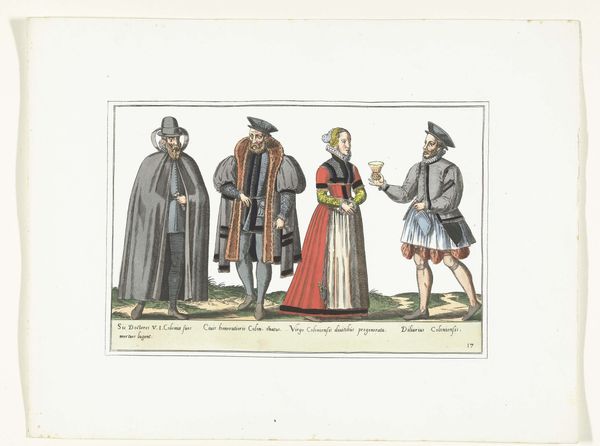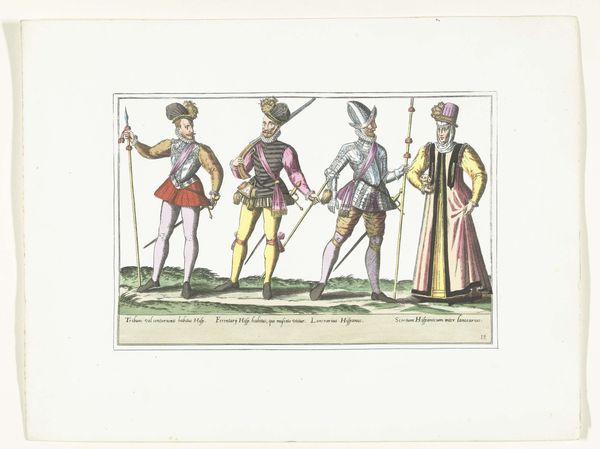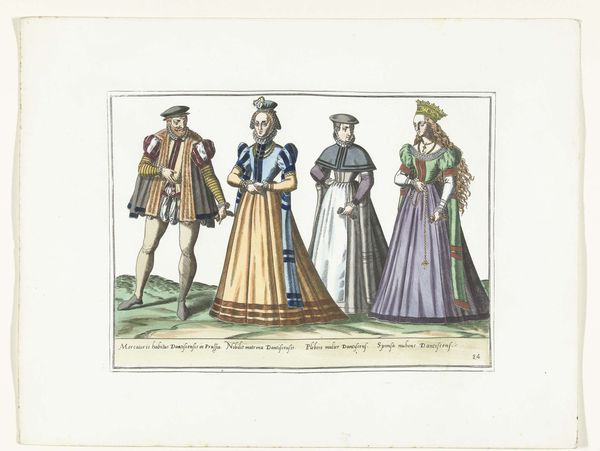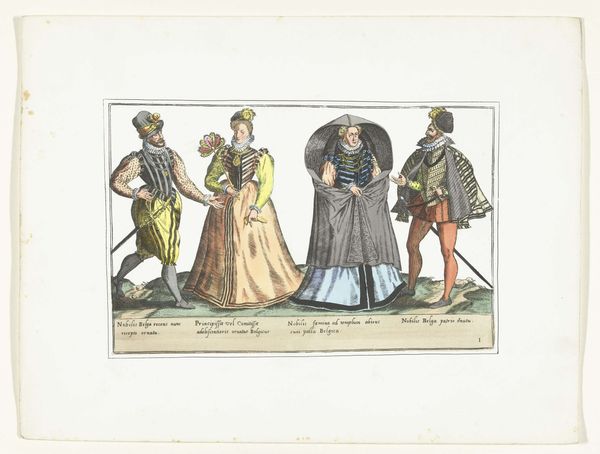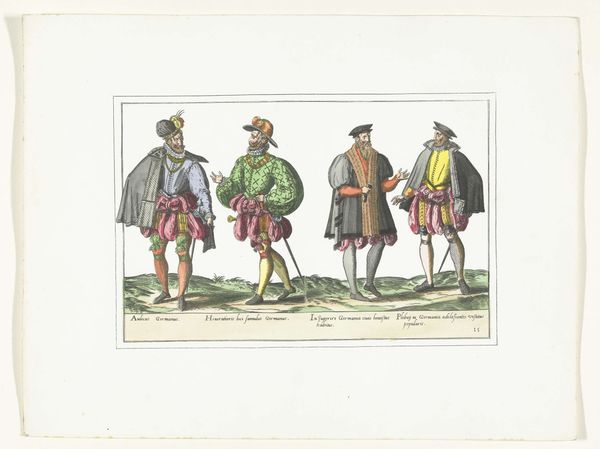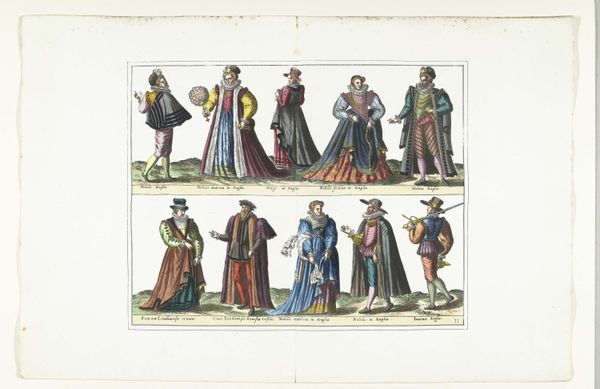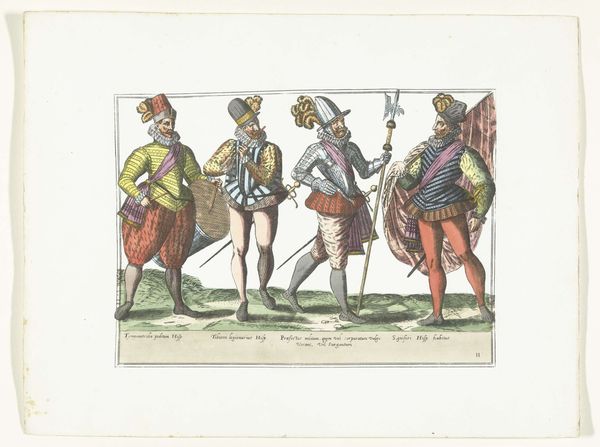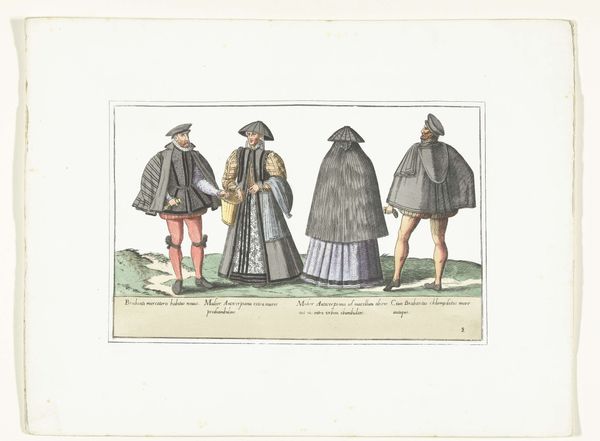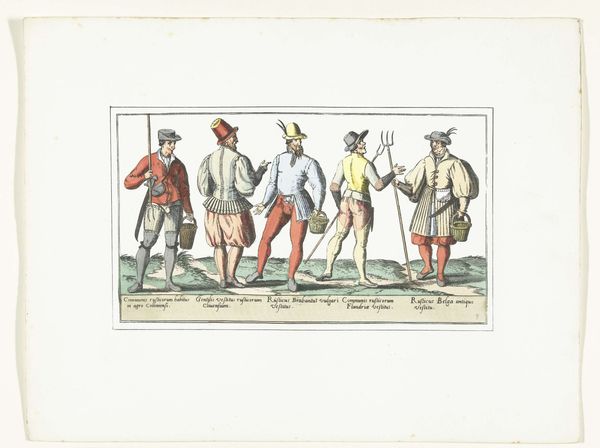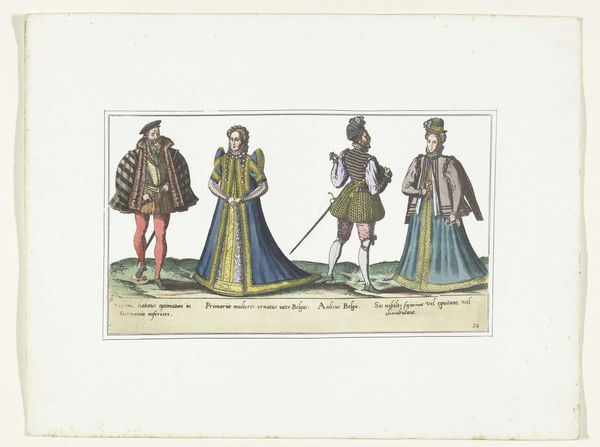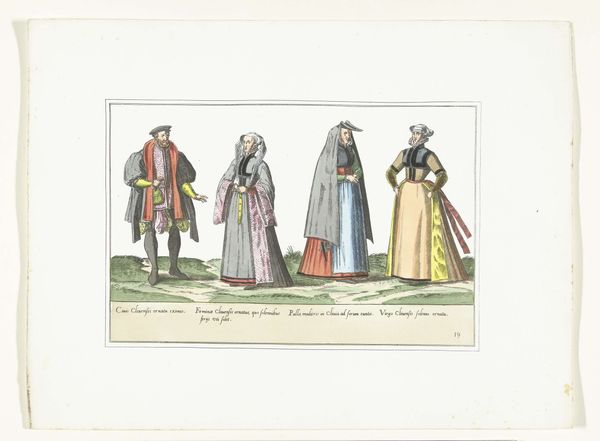
Twee boeren en twee boerinnen gekleed volgens de Italiaanse mode, ca. 1580 1872 - 1875
0:00
0:00
print, engraving
#
portrait
# print
#
traditional media
#
figuration
#
genre-painting
#
history-painting
#
academic-art
#
italian-renaissance
#
engraving
Dimensions: height 274 mm, width 360 mm
Copyright: Rijks Museum: Open Domain
Curator: This print, residing here at the Rijksmuseum, is titled "Two Farmers and Two Farmer's Wives Dressed in the Italian Fashion, around 1580." Although it's by an anonymous artist, it was created between 1872 and 1875, utilizing engraving as its primary medium. Editor: I'm immediately struck by how orderly it is. Almost like a staged tableau vivant. Each figure, while individual, feels intentionally placed and displayed, inviting comparison across class and gender. Curator: The material reality of its creation is quite interesting. Though depicting 16th-century attire, it was actually made much later. This raises questions about its intended use – perhaps as a historical reference, or a romanticized vision of rural life circulating in the 19th century. Editor: Indeed. There's a tension here between documenting a specific period and constructing an idea about Italian peasant identity. Are we really seeing faithful representation, or are these figures styled and idealized through the lens of later ideologies of labor and class? Curator: We should note the labor that went into the work. It isn't painted; it is a printed image, made via laborious carving of plates and their painstaking application onto paper in sequence to generate a colour image, which suggests it was for circulation and display of some kind, thus making its meaning through its materiality. Editor: And look closer – who is absent? What is it omitting, as well as showcasing? What about non-normative identities of that time and place? It hints at something crucial. These absences challenge us to recognize how dominant cultural narratives are constructed, excluding certain voices. Curator: It’s a dance of preservation and re-presentation, the 19th century attempting to grapple with and frame the Renaissance vision through the material language of print and the dissemination of information. Editor: Exactly. The artist doesn’t offer a transparent window to the past. The image makes history a tool—to be analyzed, questioned, and seen for all of its contradictions. This allows for an unpacking of the layers of history making inherent within it, and whose interests are served by the fashion parade.
Comments
No comments
Be the first to comment and join the conversation on the ultimate creative platform.
